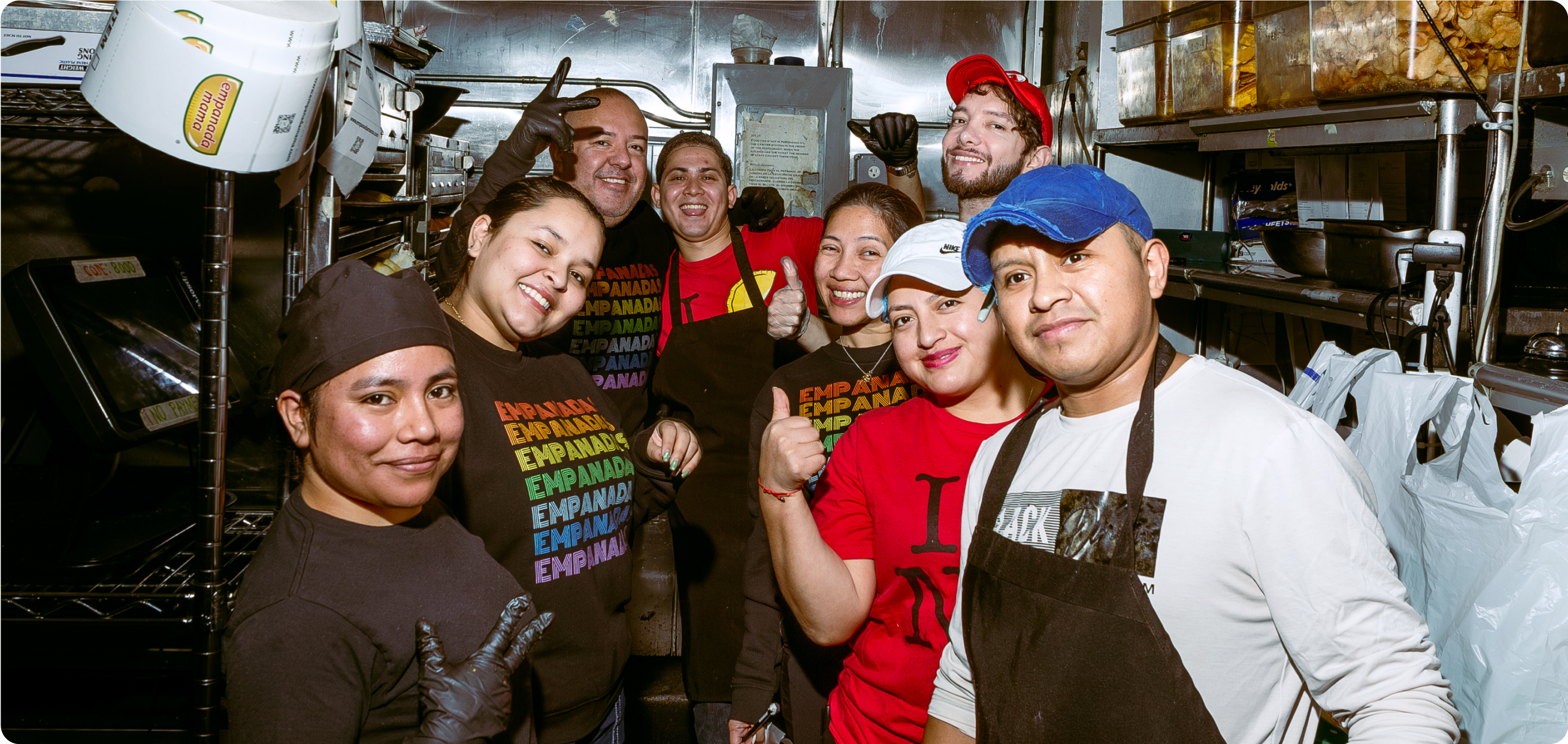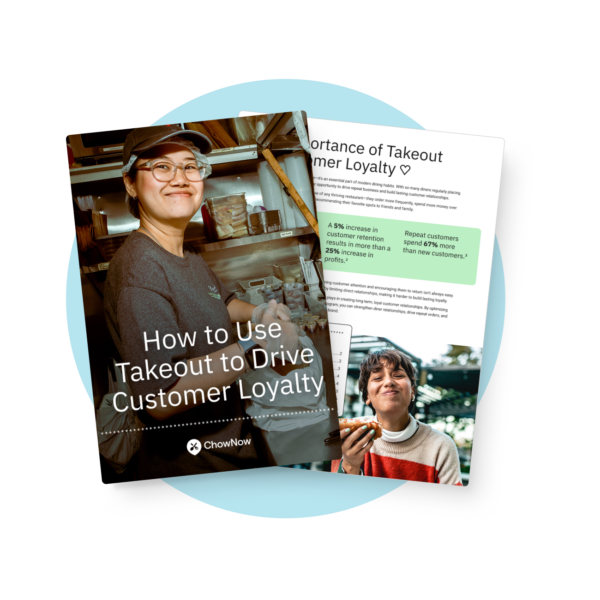How to Lower Restaurant Labor Costs and Boost Profitability: Quick Wins and Long-Term Solutions

Running a restaurant and operating a business are two sides of the hospitality coin: the former keeps food hitting tables and the latter makes sure you can do it again tomorrow. It’s always been a challenge to do both well, but recent increases in labor and food costs have intensified these challenges. With inflation rising and the job market becoming more competitive, finding and retaining talent while managing costs is a top priority for restaurateurs.
In a recent webinar from ChowNow and 7shifts, experts from both sides addressed some quick wins and long-term plays that can help restaurants meet these challenges.
Shandy Linley, Senior Director of Customer Success at ChowNow, leaned on years of experience in the restaurant tech space and an extensive background in restaurant operations. She provided a wealth of knowledge on using technology and other strategies to improve profitability. Sukh Singh, Senior Sales Manager at 7shifts, offered deep insights into effective labor cost management practices.
Together, they presented a comprehensive guide for restaurateurs looking to reduce labor costs without sacrificing service quality. By applying both the immediate and long-term solutions discussed, you can take proactive steps toward reducing labor costs and boosting your restaurant’s profitability.
Short-Term Solutions
Take Stock of Your Current Sales vs. Labor Costs
The first step in managing labor costs effectively is to understand where your expenses are allocated. By monitoring your Point of Sale (POS) data and comparing this with labor expenses, you can identify inefficiencies. For example, are you overstaffing during low-traffic periods? Conversely, are you under-serving during peak hours?
As Sukh Singh from 7shifts emphasized during the webinar, gaining insight into your labor costs can help you make informed decisions about resource allocation.
“Use software that integrates POS data with your scheduling system to provide real-time insights and adjust staffing levels accordingly,” said Singh.
Take Immediate Actions for Changing Schedules During Busy and Quiet Times
Adjusting staff schedules to better match busy and quiet times can lead to immediate savings. For example, if your restaurant usually experiences a lull between 2 PM and 4 PM, consider reducing staff during these hours. Similarly, ensure you have adequate coverage during peak times to maximize service efficiency.
Singh highlighted that even small adjustments can produce significant savings:
“It’s crucial for scheduling managers to hold team members accountable and make data-driven decisions that reflect actual business needs. Automated scheduling systems can forecast busy periods and recommend staffing changes to optimize labor costs.”
Engage Team Members in Cost-Saving Initiatives
Engaging your staff in identifying cost-saving opportunities can be incredibly effective.
Shandy Linley from ChowNow mentioned the importance of communicating the reasons behind cost-saving measures to your team. This ranges from bigger things like monitoring portion sizes to smaller practices like turning off lights and equipment when not needed.
“Encouraging staff to suggest areas where waste can be reduced or processes streamlined creates a culture of cost-awareness, making everyone feel invested in the restaurant’s financial health,” said Linley. This collaborative approach has two benefits. It fosters a sense of ownership among employees and surfaces innovative solutions to reduce costs.
Optimize Portion Sizes and Standardize Recipes
Another quick win is to optimize portion sizes and standardize recipes. If certain menu items often go unfinished, consider reducing portion sizes, which can lead to significant savings over time. Standardizing recipes ensures consistency and prevents overuse of ingredients.
Linley emphasized the importance of staff understanding why these measures are necessary. “Regular training and communication are key. When everyone is on the same page, it’s easier to implement these cost-saving measures,” said Linley. Including team members in these decisions can also improve adherence to new policies.
Long-Term Solutions
Invest in Smart Technology
Investing in technology can create significant long-term savings. Smart thermostats and energy-efficient appliances can have a massive impact on utility costs. These devices optimize energy usage, ensuring that your restaurant is not heating or cooling when it’s not necessary—and take human error out of the equation.
Similarly, inventory management software can track your stock levels and help predict demand, reducing the likelihood of over-ordering and waste. Tools that integrate with your POS system can offer insights into popular vs. underperforming menu items, allowing you to make informed decisions about what to keep and remove from your menu.
Singh highlighted the importance of choosing software that integrates seamlessly with other systems.
“Effective technology investments can reduce administrative workload and minimize human error, ultimately leading to significant long-term savings,” said Singh.
Focus on Effective Labor Management Software
Labor management software, like the solutions provided by 7shifts, offers features designed to handle restaurants’ complex needs. With integrated POS data, these tools can track labor costs in real time and streamline the scheduling process. Such software not only reduces administrative workload but also minimizes human error in scheduling, which can be costly.
Automated systems for tracking compliance with labor laws, such as meal breaks and shifts, are also essential. This prevents potential lawsuits and fines while ensuring your employees are well-rested and satisfied with their schedules. “Compliance is a significant issue, especially in states with strict labor laws. Our tools help operators stay compliant effortlessly,” Singh said.
Implement Employee Retention Strategies
Retaining employees is crucial for reducing turnover costs. During the webinar, both Linley and Singh emphasized the importance of creating a positive work environment. Offering competitive pay is important, but so is engaging employees in meaningful ways.
“Providing timely feedback and recognizing strong performance can boost morale. Offering clear paths for career advancement and training opportunities makes employees feel valued and invested in their roles,” said Linley.
Singh also mentioned the growing importance of flexible payment options. “Many employees prefer receiving their tips or payment more frequently than the traditional bi-weekly pay structure. Implementing a system where tips can be paid out daily can significantly improve employee satisfaction and retention,” he said.
Regularly Maintain and Upgrade Equipment
Regular maintenance and timely upgrades of kitchen equipment can save a lot of money in the long run. Linley pointed out that setting reminders for routine maintenance tasks, such as changing filters and servicing appliances, can extend their lifespan and prevent costly breakdowns.
“Investing in high-quality, energy-efficient equipment can also reduce utility costs and improve overall kitchen efficiency,” Linley stated. This proactive approach ensures that unexpected, expensive repairs do not disrupt operations.
Negotiate with Suppliers and Optimize Inventory
Building strong relationships with suppliers and regularly negotiating contracts can lead to better pricing and terms. Linley suggested that operators frequently review their inventory to identify any inefficiencies. “Using software to manage inventory can prevent over-ordering and reduce food waste, ensuring that your budget is spent effectively,” she explained.
Negotiating bulk purchasing discounts or seasonal rates with suppliers can also lead to considerable savings over time. Establishing these strong relationships can provide more leverage during negotiations.
Explore Alternative Revenue Streams
Innovative revenue streams can provide a significant boost to profitability. Consider offering meal kits, catering services, cooking classes, or branded merchandise. Linley emphasized the importance of meeting customers where they are, whether through an online presence, mobile app, or partnerships with food delivery platforms that charge lower commission rates.
“Offering unique experiences or products that complement your restaurant’s brand can attract new customers and encourage repeat business,” Linley said. This diversification not only mitigates risk but also opens up new avenues for revenue generation.
Moving forward
Efficient labor management requires a combination of short-term actions and long-term strategies. By integrating smart technology, optimizing schedules, and enhancing employee engagement and retention, restaurants can navigate the challenges of rising labor costs. Utilize the tools and tips provided by industry experts to create a more profitable and sustainable business model.
To gain more detailed insights and practical tips on managing labor costs, make sure to watch the full webinar recording from ChowNow and 7shifts. Visit the ChowNow and 7shifts webinar page to access the recording and start making moves toward increased profitability.
About 7shifts
Born in the back office of a sandwich shop, 7shifts was founded by Jordan Boesch in 2014 with the goal of building simple solutions to solve even the most complex team management challenges. 7shifts is a scheduling, payroll, and employee retention app designed to improve performance for restaurants. The easy-to-use app offers industry-specific features that help more than 50,000 restaurants save time, reduce errors, and keep labor costs in check. ChowNow customers receive 2 months free and zero setup fees, so sign up today.







